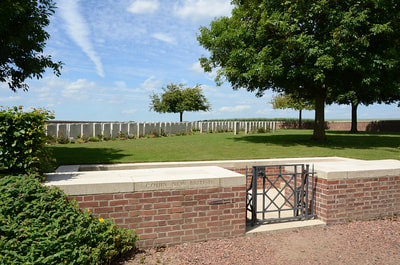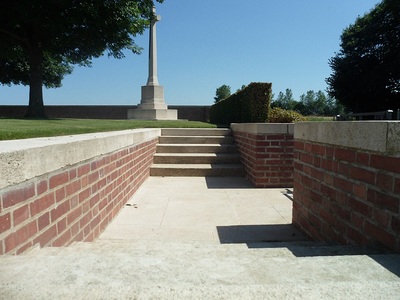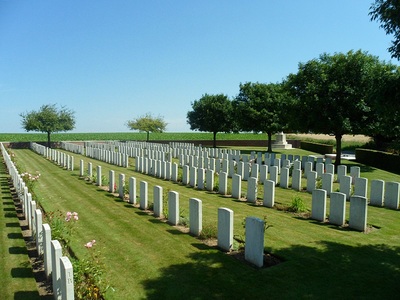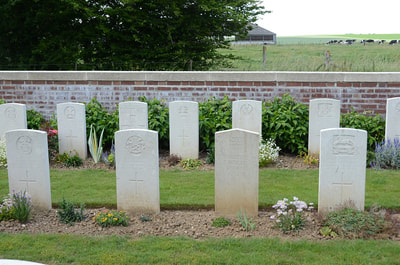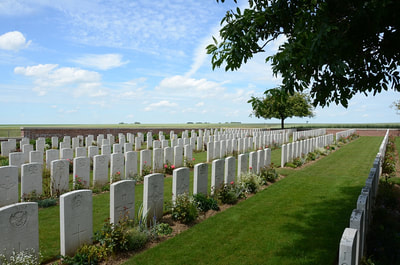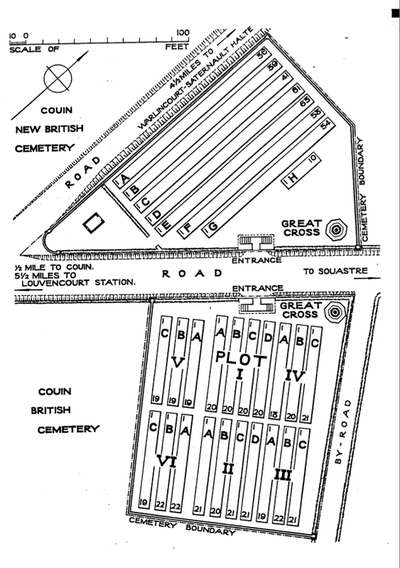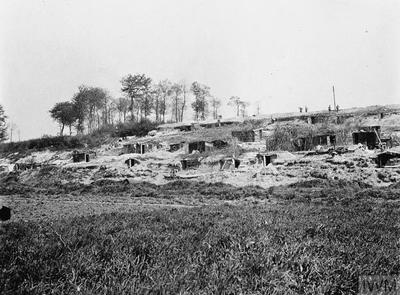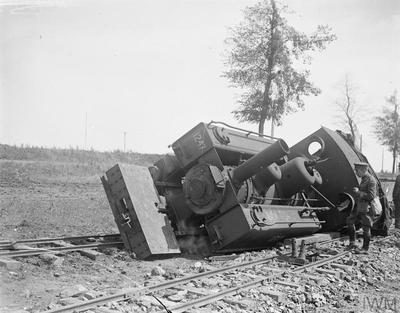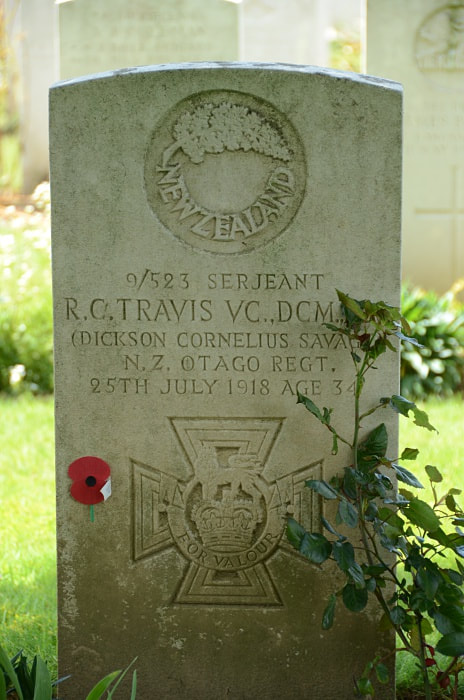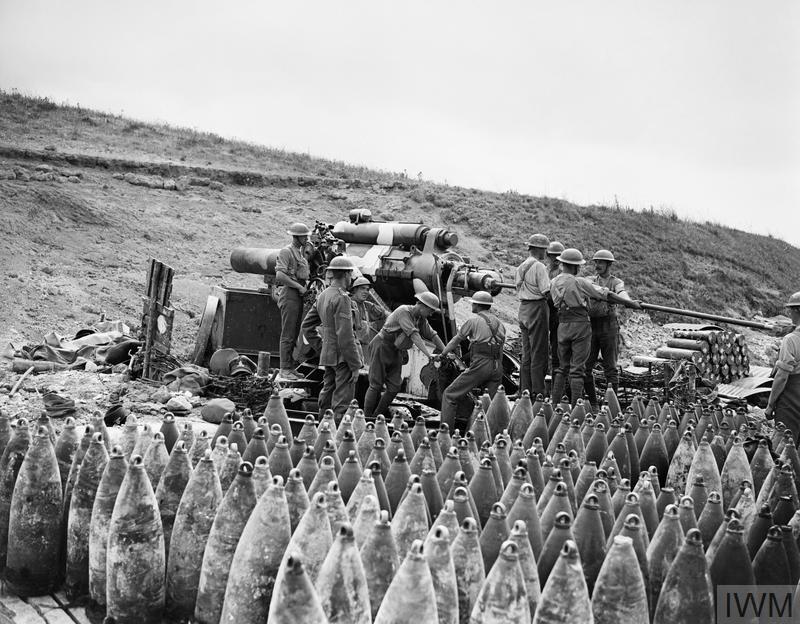COUIN NEW BRITISH CEMETERY
Pas De Calais
France
Location Information
Couin is a village 15 kilometres east of Doullens.
Visitors should follow the main Doullens to Arras road, N25, as far as the crossroads with the D23. Follow the D23 to Souastre, then the D2 to Couin, as indicated by the CWGC sign.
Couin British Cemetery and Couin New British Cemetery are at the side of the road just before entering the village.
Visiting Information
Wheelchair access to site is possible, but may be by alternative entrance.
Historical Information
Couin Chateau was used as a divisional headquarters from 1915 to 1918.
The BRITISH CEMETERY was begun in May 1916 by the field ambulances of the 48th (South Midland) Division, and was used by units and field ambulances during the Battle of the Somme in 1916. It was closed at the end of January 1917 because further extension was not possible, and now contains 401 Commonwealth burials of the First World War and three German graves.
The NEW BRITISH CEMETERY was opened across the road and was used by field ambulances from January 1917 (with a long interval in 1917-18) to the end of the war. One grave was moved there after the Armistice from a cemetery at Coigneux. It now contains 360 Commonwealth burials of the First World War and two German war graves.
Casualty Details: UK 344, Canada 2, New Zealand 14, Germany 2, Total Burials: 362
Both cemeteries were designed by Sir Reginald Blomfield.
Couin is a village 15 kilometres east of Doullens.
Visitors should follow the main Doullens to Arras road, N25, as far as the crossroads with the D23. Follow the D23 to Souastre, then the D2 to Couin, as indicated by the CWGC sign.
Couin British Cemetery and Couin New British Cemetery are at the side of the road just before entering the village.
Visiting Information
Wheelchair access to site is possible, but may be by alternative entrance.
Historical Information
Couin Chateau was used as a divisional headquarters from 1915 to 1918.
The BRITISH CEMETERY was begun in May 1916 by the field ambulances of the 48th (South Midland) Division, and was used by units and field ambulances during the Battle of the Somme in 1916. It was closed at the end of January 1917 because further extension was not possible, and now contains 401 Commonwealth burials of the First World War and three German graves.
The NEW BRITISH CEMETERY was opened across the road and was used by field ambulances from January 1917 (with a long interval in 1917-18) to the end of the war. One grave was moved there after the Armistice from a cemetery at Coigneux. It now contains 360 Commonwealth burials of the First World War and two German war graves.
Casualty Details: UK 344, Canada 2, New Zealand 14, Germany 2, Total Burials: 362
Both cemeteries were designed by Sir Reginald Blomfield.

The last 3 images (above) are courtesy © of Michael Broad of Dunedin, New Zealand. The final image is a commemorative plaque placed at a Dunedin Car Park.
Serjeant Dickson Cornelius Savage, (Richard Charles Travis) V. C., D. C. M., M. M., Twice mentioned in Despatches
2nd Bn. Otago Regiment, New Zealand Expeditionary Force, killed in action 25th July 1918 aged 34 years, Row G. 5. (Served as Serjeant Richard Charles Travis),
Son of the late James and Frances Theresa Savage, of Otara, Opotiki, New Zealand. Known as "Prince of Scouts," and "King of No Man's Land." Also served in Egypt and Gallipoli. Awarded Croix de Guerre (Belgium).
Citation: The Victoria Cross was a posthumous award. An extract from the "London Gazette," dated 27th Sep., 1918, records the following:- "For most conspicuous bravery and devotion to duty. During 'surprise' operations it was necessary to destroy an impassable wire block. Serjt. Travis, regardless of personal danger, volunteered for this duty. Before zero hour, in broad daylight and in close proximity to enemy posts he crawled out and successfully destroyed the block with bombs, thus enabling the attacking parties to pass through. A few minutes later a bombing party on the right of the attack was held up by two enemy machine guns, and the success of the whole operation was in danger. Perceiving this Serjt. Travis with great gallantry and utter disregard of danger, rushed the position, killed the crews and captured the guns. An enemy officer and three men immediately rushed at him from a bend in the trench and attempted to retake the guns. These four he killed single handed, thus allowing the bombing party on which much depended to advance. The success of the operation was almost entirely due to the heroic work of this gallant N.C.O. and the vigour with which he made and used opportunities for inflicting casualties on the enemy. He was killed 24 hours later when, in a most intense bombardment prior to an enemy counter-attack, he was going from post to post encouraging the men." The D.C.M. was awarded "For conspicuous gallantry in action. He went out by himself and accounted for several enemy snipers who were firing at a working party. He has on many previous occasions done very fine work."
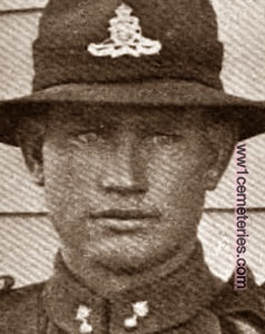
12/1885 Gunner
Alexander Law Bell
New Zealand Field Artillery
9th August 1918, aged 21.
Row G. 10.
Son of Edward and Mary Bell. His brother, John Bell also fell and is buried at Strand Military Cemetery.
Alexander Law Bell
New Zealand Field Artillery
9th August 1918, aged 21.
Row G. 10.
Son of Edward and Mary Bell. His brother, John Bell also fell and is buried at Strand Military Cemetery.
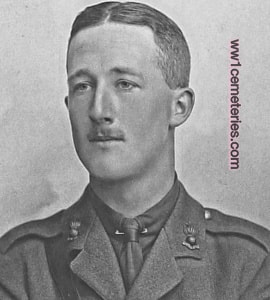
Lieutenant
Norman Newton Caton, M. C.
"C" Bty. 124th Bde. Royal Field Artillery
21st April 1918, aged 27.
Row B. 30.
Son of Mr. E. S. and Mrs. K. M. Caton, of "Barncote," Reigate, Surrey.
His Military Cross citation read;
"For conspicuous gallantry and devotion to duty near Hangard on April 4th 1918. Lieut. Caton was forward observation officer. The observation post came under heavy shell fire, which became so intense that he was ordered to withdraw. Owing to the urgency of the situation, however, Lieut. Caton voluntarily returned, although the O.P. was entirely without protection. By his quick and accurate grasp of the situation he enabled the Battery to inflict heavy loss on the enemy. On several occasions throughout the day Lieut. Caton personally carried information through heavy artillery barrages to the Battery."
Norman Newton Caton, M. C.
"C" Bty. 124th Bde. Royal Field Artillery
21st April 1918, aged 27.
Row B. 30.
Son of Mr. E. S. and Mrs. K. M. Caton, of "Barncote," Reigate, Surrey.
His Military Cross citation read;
"For conspicuous gallantry and devotion to duty near Hangard on April 4th 1918. Lieut. Caton was forward observation officer. The observation post came under heavy shell fire, which became so intense that he was ordered to withdraw. Owing to the urgency of the situation, however, Lieut. Caton voluntarily returned, although the O.P. was entirely without protection. By his quick and accurate grasp of the situation he enabled the Battery to inflict heavy loss on the enemy. On several occasions throughout the day Lieut. Caton personally carried information through heavy artillery barrages to the Battery."
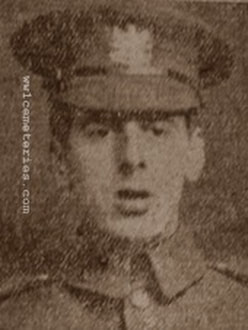
141768 Private
Charles Edward Edmondson
42nd Bn. Machine Gun Corps. (Infantry)
2nd June 1918, aged 21.
Row F. 32.
Son of Mr. and Mrs. Thomas Edmondson, 95 Leyland Rd., Burnley. Formerly 50 Milton Street, Burnley.
A weaver at Emmott's, Burnley Lane.
Charles Edward Edmondson
42nd Bn. Machine Gun Corps. (Infantry)
2nd June 1918, aged 21.
Row F. 32.
Son of Mr. and Mrs. Thomas Edmondson, 95 Leyland Rd., Burnley. Formerly 50 Milton Street, Burnley.
A weaver at Emmott's, Burnley Lane.
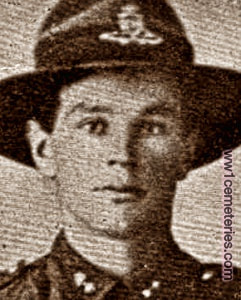
35668 Gunner
Cornelius Lee Goodwin
New Zealand Field Artillery
18th August 1918, aged 19.
Row H. 2.
Son of Robert and Louisa Goodwin.
Cornelius Lee Goodwin
New Zealand Field Artillery
18th August 1918, aged 19.
Row H. 2.
Son of Robert and Louisa Goodwin.
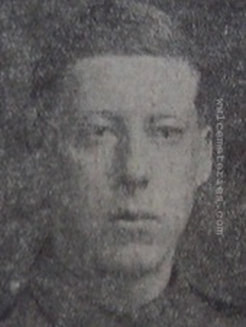
24332 Private
William Edgar Gorman
"A" Coy. 2nd/5th Bn. King's Own, (Royal Lancaster Regiment)
18th May 1918, aged 22.
Row E. 27.
Son of William and Rosa Jane Gorman, of Rowley House, Burnley. Native of Bristol.
Worked for Burnley Corporation at Hurstwood reservoir prior to enlisting. He was killed when a shell dropped into his post, killing him and another man and wounding three others.
William Edgar Gorman
"A" Coy. 2nd/5th Bn. King's Own, (Royal Lancaster Regiment)
18th May 1918, aged 22.
Row E. 27.
Son of William and Rosa Jane Gorman, of Rowley House, Burnley. Native of Bristol.
Worked for Burnley Corporation at Hurstwood reservoir prior to enlisting. He was killed when a shell dropped into his post, killing him and another man and wounding three others.
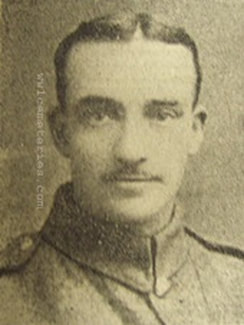
377645 Private
James Edward Green
1st/7th Bn. Manchester Regiment
2nd May 1918, aged 35.
Row C. 41.
Son of John and Mary Ann Green, of 23, Hollingreave Rd., Burnley; husband of Ada Green, of 56, Dall St., Burnley Wood, Burnley.
James Edward Green
1st/7th Bn. Manchester Regiment
2nd May 1918, aged 35.
Row C. 41.
Son of John and Mary Ann Green, of 23, Hollingreave Rd., Burnley; husband of Ada Green, of 56, Dall St., Burnley Wood, Burnley.

